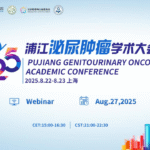
Editor's Note: At the 30th Annual Congress of the European Hematology Association (EHA) held in Milan, Italy, global hematology experts gathered to share cutting-edge research and clinical breakthroughs. The prestigious "EHA Research Excellence Award" was presented to Professor Alberto Orfao of the University of Salamanca and the Cancer Research Center (CIC) in Spain, in recognition of his pioneering contributions over the past three decades, particularly in the fields of flow cytometry and the early diagnosis of leukemia and other hematologic neoplasms. In his award lecture, Professor Orfao used the rare disease "mastocytosis" as a case study to provide a deep analysis of the clinical significance of minimal tumor clones, their complex interplay with the immune system, and to showcase revolutionary early diagnostic technologies, offering valuable insights for interdisciplinary research between hematology and other fields.As a scholar with a research career spanning over 30 years, Professor Alberto Orfao began his lecture by expressing his profound gratitude. He attributed this honor to the hundreds of outstanding researchers and clinicians he has collaborated with, as well as the collective efforts of nearly 150 members of his team. “I am standing here today based on the results of more than 800 papers and over 70 patents that we have co-authored, which have been translated into diagnostic tools used worldwide,” said Professor Orfao. “This award is a recognition of all my team members, my mentors, my 55 PhD students, and all the technical staff who support our daily work.”
Mastocytosis: A Unique Disease Research Model
Professor Orfao focused his lecture on a frequently overlooked rare disease—mastocytosis. He pointed out that it serves as an ideal research model due to several distinct characteristics:
l Highly Correlated Gene Mutation: Over 90% of patients carry the exact same mutation in the KIT gene, providing a clear molecular target for disease research.
l Clear Cellular Origin: The disease is confirmed to be a stem cell disorder. As mast cells continuously express the KIT protein throughout their maturation, they become the primary cell population affected by the mutation.
l Clinical Manifestations Enabling Early Diagnosis: The KIT mutation leads to abnormal proliferation, activation, and accumulation of mast cells. This rapidly translates into skin lesions that can be detected early or severe allergic reactions (such as anaphylactic shock) triggered by mast cell activation, offering a window for intervention in the initial stages of the disease.
Based on this in-depth exploration, Professor Orfao and his colleagues have been promoting mastocytosis research in Spain since 1993. The Spanish Mastocytosis Network (REMA), which they established, has grown from an initial cohort of only 18 patients to over 3,000 patients currently followed at the national reference center, laying a solid foundation for systematic research.

From Gene Mutation to Clinical Heterogeneity: Decoding the Key to Disease Progression
Professor Orfao went on to note that although the KIT mutation is the core driver, it alone cannot fully explain the vast clinical differences among patients—ranging from indolent skin lesions to aggressive malignancies. Through years of research, his team has uncovered several key layers that determine the disease’s behavior:
l Multilineage Involvement: Research has confirmed that in all advanced cases, the KIT mutation is not only present in mast cells but is also widespread in other myeloid and lymphoid cells. This pattern of multilineage involvement is a high-risk indicator for progression to more advanced forms of the disease. Today, this risk can be quantified more precisely by measuring the variant allele frequency (VAF) of the KIT mutation.
l Additional Gene Mutations: Patients with advanced disease often harbor other gene mutations associated with hematologic neoplasms in addition to the KIT mutation. The presence of these additional mutations predicts a poorer prognosis.
l Phenotypic and Behavioral Differences: Mast cells in early- and late-stage disease are distinctly different in their phenotype and gene expression. Cells in the early stage more closely resemble mature, activated immune cells, whereas cells in the late stage exhibit immature features, which allows them to enter the peripheral blood more easily, thereby accelerating disease dissemination. Therefore, detecting circulating mast cells in peripheral blood is a key indicator for identifying patients at high risk of progression.

Beyond Tumor Cells: The Central Role of the Immune System in the Disease
The core of Professor Orfao’s lecture focused on his team’s most groundbreaking findings in recent years: redefining the role of mast cells in the disease. The traditional view held that mutated mast cells were the “factories” producing various symptoms. However, existing targeted therapies with KIT inhibitors have encountered a bottleneck: despite effectively clearing mast cells, patients’ symptoms are only relieved by about 10-25%.
“This prompted us to think, as part of the immune system, do mast cells not only directly cause symptoms but also regulate the entire immune environment?” Professor Orfao explained.
Based on this hypothesis, his team conducted an in-depth analysis of patients’ immune systems and reached a revolutionary conclusion:
l Persistent Innate Immune Activation: Compared to healthy controls, innate immune cells such as monocytes and dendritic cells in patients are in a state of full activation, spontaneously producing large amounts of cytokines and creating a “chronic inflammatory storm.”
l Remodeling of Adaptive Immunity: In the early stages of the disease, patients’ T-cell and B-cell compartments undergo dramatic changes. Although the production of T/B cells increases, effector cells “disappear” from the blood, suggesting that the main battlefield of the immune response may have shifted from the circulatory system to “barrier tissues” like the gastrointestinal tract.
l A Shift Towards a Type 2 Immune Response: This immune remodeling is highly correlated with clinical manifestations. Patients exhibit typical features of a Type 2 (allergic) immune response, such as elevated IgE levels and decreased IgG levels.
Together, these findings point to a new model: mutated mast cells may first disrupt the integrity of barriers like the gut, allowing a large number of new antigens to enter the body. Meanwhile, immune cells affected by the mutation (such as type 2 and type 3 innate lymphoid cells) guide the body to produce an abnormal, IgE-dominant immune response, thereby triggering complex clinical symptoms. This discovery not only explains the limited efficacy of targeted therapies but also opens up new therapeutic avenues targeting immune pathways, such as the IgE signaling pathway.

Diagnostic Frontiers: High-Sensitivity Techniques Link Anaphylactic Shock with Minimal Clones
In the final part of his lecture, Professor Orfao expanded the scope to the earliest stage of the disease—primary Mast Cell Activation Syndrome (MCAS), where patients often present with unexplained, severe anaphylactic shock. Conventional detection methods could only identify KIT mutations in about 5% of these patients, making diagnosis and etiological investigation extremely difficult.
Here, Professor Orfao introduced a major technological breakthrough:
l Technological Breakthrough and International Collaboration: His team collaborated with a Swedish company to apply a novel KIT mutation detection technology with high sensitivity and high specificity.
l Astonishing Results:
In MCAS patients, the mutation detection rate jumped from 5% to over 18%.
In peripheral blood samples, the technology could identify an additional 20% of positive cases.
Even more revealing, in a preliminary study on buccal swab (cheek mucosa) samples, nearly half (48%) of the 21 patients tested positive for the mutation!
“This discovery raises a fundamental question: is the KIT mutation the molecular basis for many cases of unexplained anaphylactic shock?” Professor Orfao emphasized. “It also shows us that we should not ignore these minimal hematopoietic clones. Even if they seem insignificant in hematology, they may be critically important in other specialties, such as allergology.” He compared this to the association between CHIP (Clonal Hematopoiesis of Indeterminate Potential) and cardiovascular disease, pointing out that this could be a significant public health issue.
In conclusion, Professor Orfao once again thanked all his collaborators and patient organizations, including EuroFlow and the European Competence Network on Mastocytosis (ECNM). His research has not only brought a new understanding and therapeutic direction to a rare disease but, more importantly, it provides a valuable paradigm for the global medical community: in-depth exploration of the interaction between minimal tumor clones and the host immune system holds the promise of unraveling the mysteries of more complex diseases and advancing precision diagnosis and treatment into a new era. This research, originating from Europe, has contributed exceptional wisdom and solutions to solving global medical challenges.


